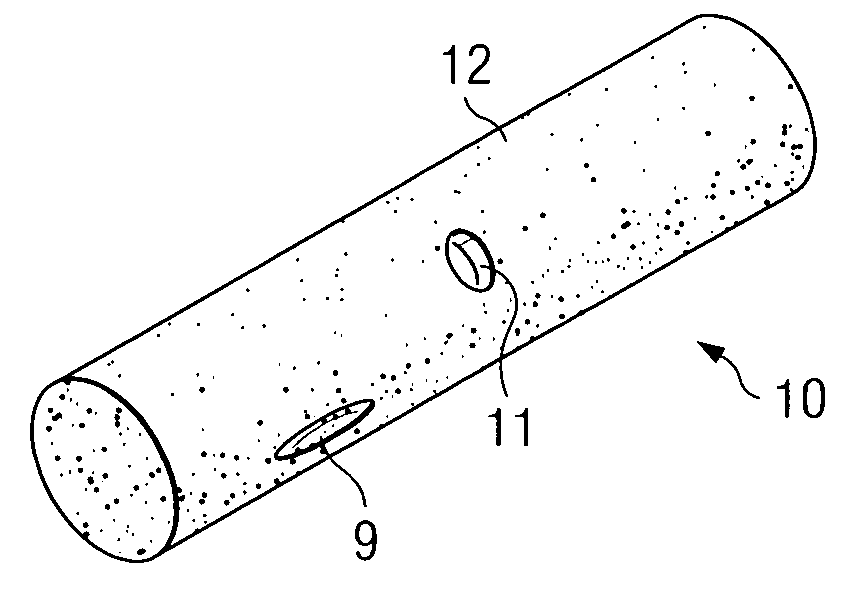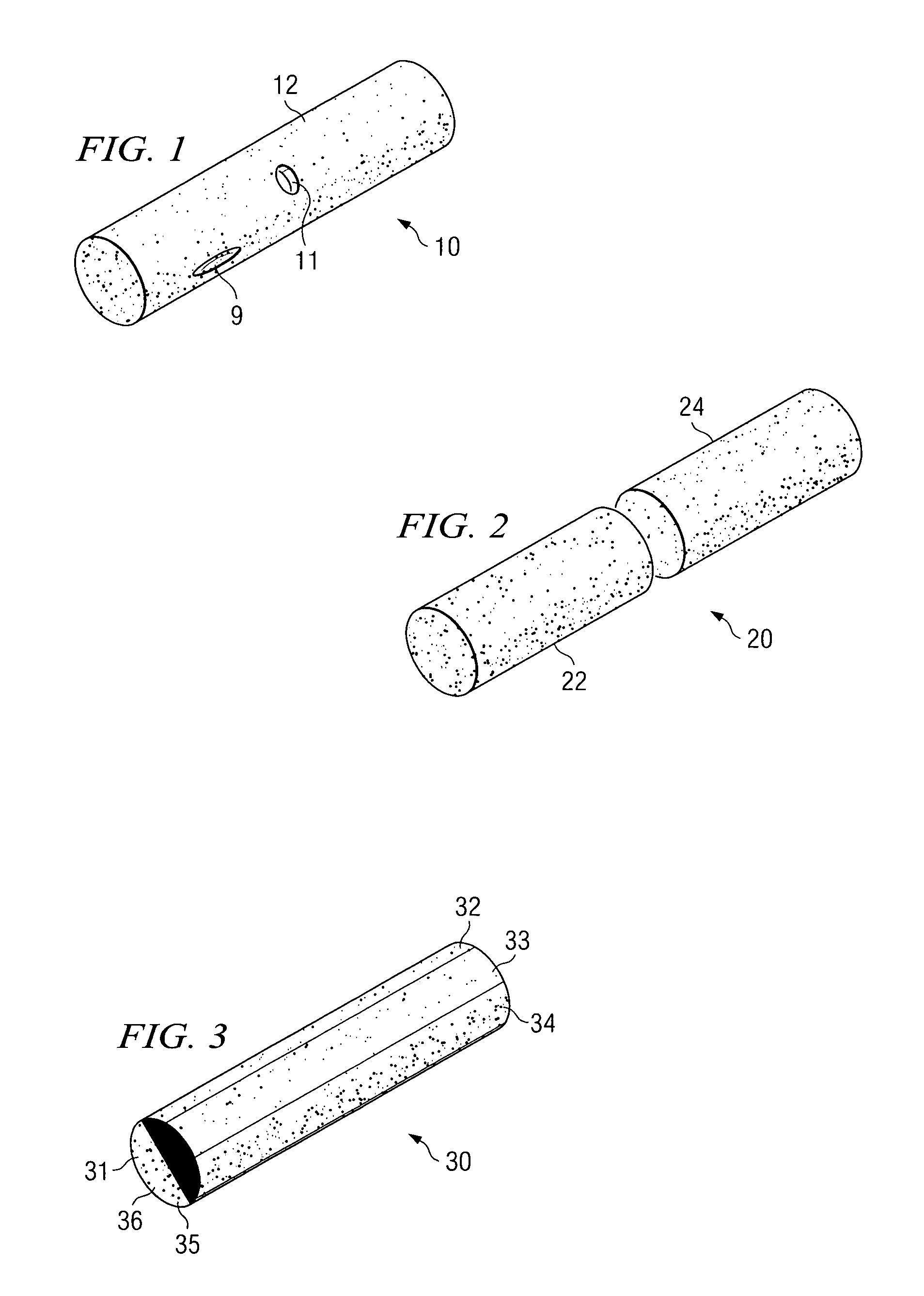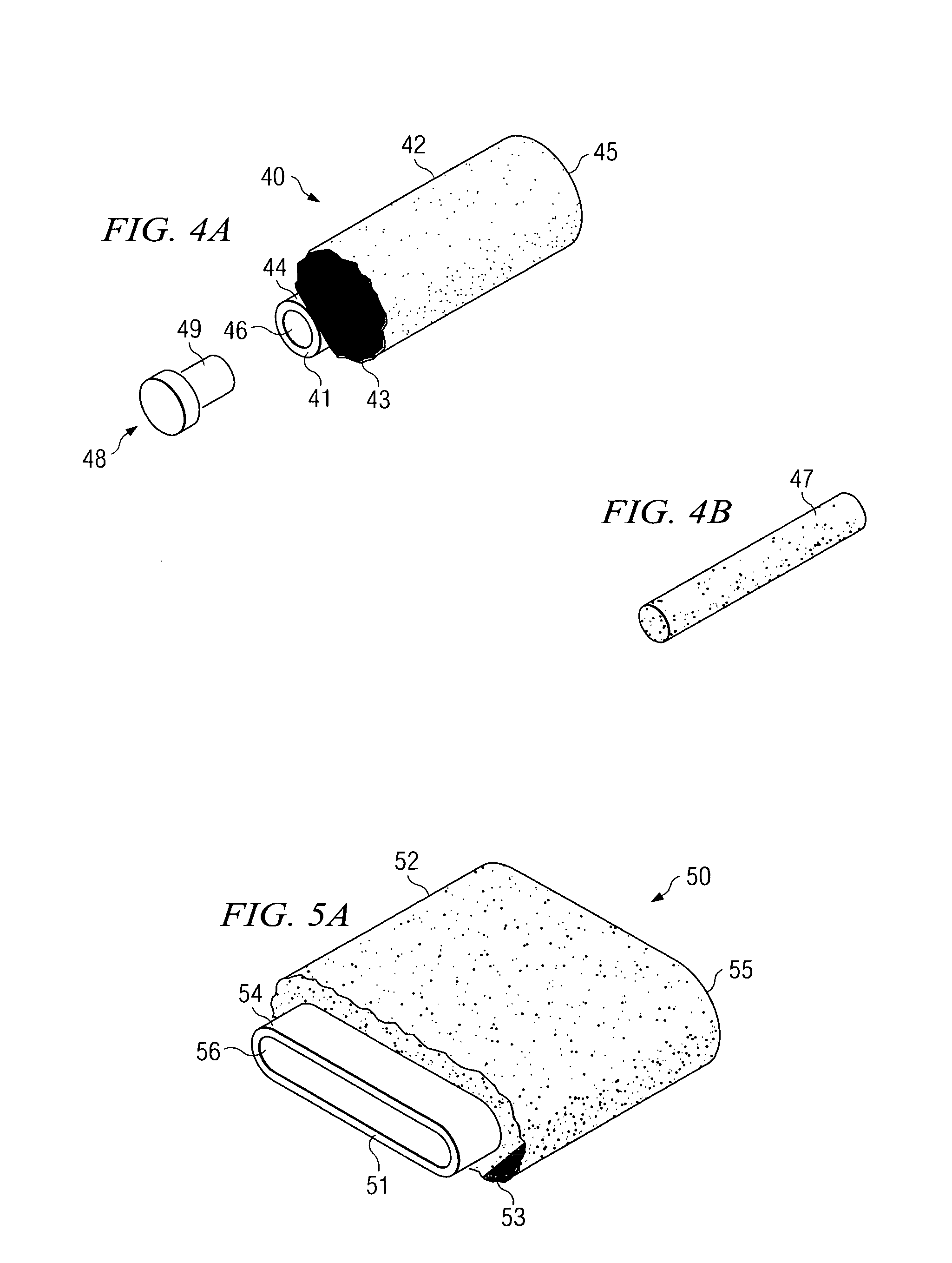Implantable system for cell growth control
a cell growth and implantable technology, applied in the field of cell growth control methods and apparatuses, can solve the problems of increasing the difficulty of treating patients infected with relatively drug-resistant pathogens, relapse or exacerbation of the disease at issue, and limited effectiveness of current treatment and prevention programs in such groups, so as to reduce the mean diffusion distance between blood vessels and reduce the porosity of reservoirs, the effect of increasing porosity
- Summary
- Abstract
- Description
- Claims
- Application Information
AI Technical Summary
Benefits of technology
Problems solved by technology
Method used
Image
Examples
Embodiment Construction
[0066]Implantable infection shields and systems for drug delivery according to the present invention comprise porous linked fibrous biomaterial disposed to either stimulate or inhibit cellular growth and / or angiogenesis, according to the predetermined requirements of the various embodiments.
[0067]One embodiment is a reservoir which contains within it a source of one or more drugs to be delivered. Intended for implantation in vascular tissue, the drug source may be a biodegradable matrix in which the drug or drugs to be delivered are dispersed, and which dissolves slowly in tissue fluid from the organism in which the reservoir is implanted. The source may also be a cell culture contained within a sealable porous chamber within the reservoir. Cultured cells receive food and oxygen by diffusion in the tissue fluid which passes through the sealable porous chamber walls. Cell-to-cell contact between cells of the organism and cultured cells is, however, prevented.
[0068]Thus, a method for ...
PUM
| Property | Measurement | Unit |
|---|---|---|
| Size | aaaaa | aaaaa |
| Size | aaaaa | aaaaa |
| Length | aaaaa | aaaaa |
Abstract
Description
Claims
Application Information
 Login to View More
Login to View More - R&D
- Intellectual Property
- Life Sciences
- Materials
- Tech Scout
- Unparalleled Data Quality
- Higher Quality Content
- 60% Fewer Hallucinations
Browse by: Latest US Patents, China's latest patents, Technical Efficacy Thesaurus, Application Domain, Technology Topic, Popular Technical Reports.
© 2025 PatSnap. All rights reserved.Legal|Privacy policy|Modern Slavery Act Transparency Statement|Sitemap|About US| Contact US: help@patsnap.com



